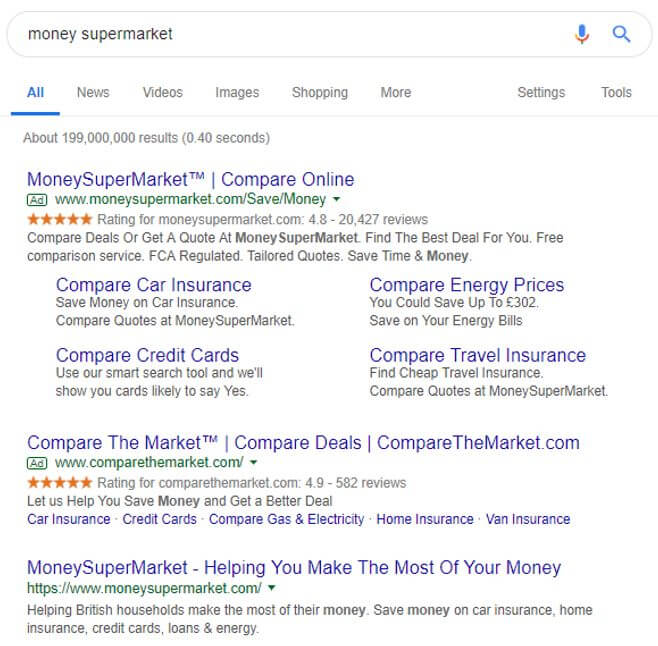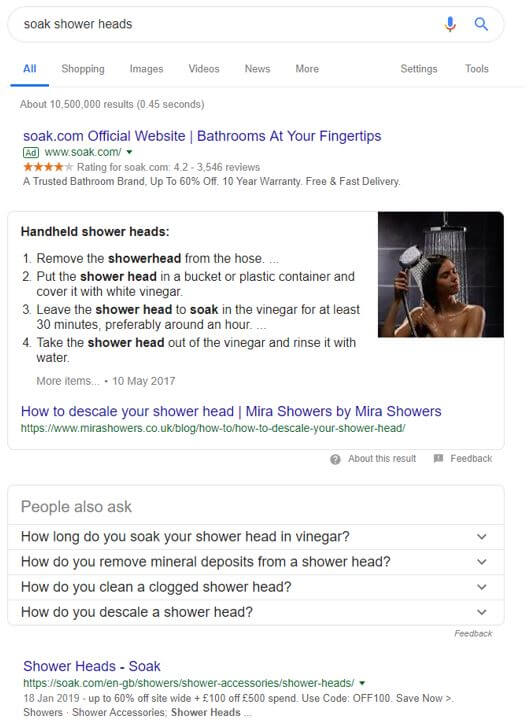Should I Bid On Brand? An Objective Look
There are a number of blog posts on the web making the case for bidding on brand. To balance things out, you can also find a case being made for not bidding on brand.
I therefore don’t want to make the case for or against bidding on brand, because there is enough material out there and it really depends on your specific circumstances.
Instead, I want to talk about the specific instances when you could consider bidding on brand and how to go about deciding whether to do so.

Some best practices for brand bidding
Whether you choose to bid on brand or not, it’s important to make sure that you’re funneling traffic into the correct campaigns.
If you have non-exact match keywords in your non-brand campaigns, then it’s possible for your longtail brand searches to be picked up from your non-brand campaigns.
For example, if you’re bidding on ‘country boots’ on a phrase match, then it’s possible for your ad to show on a search for ‘{your brand name} country boots’.
Make sure you block out your brand term as a phrase match (and misspellings of it) from your non-brand campaigns. This will ensure that you don’t pick up brand traffic from your non-brand campaigns.
If you currently have brand running, then it’s a good idea to have a think about the type of searches that you really don’t want to be paying to show PPC ads on, and that you’re happy to give to organic.
For example, if your goal is to increase revenue, then paying for traffic where someone is looking for your careers page isn’t going to help you hit your goals.
If someone is looking for your careers page, then there is a high likelihood that they will put in a little more effort to scan down the listings anyway, find your site and browse to the careers page.
Similarly, if someone is looking to return a product, then they will work to find the page that they are looking for, whether there is a PPC ad present or not.
Below are some examples of terms that you could consider blocking out from your brand campaign:
- Returns
- Complaints
- Careers/jobs
- Phone number
- Address
When is there a strong argument to bid on brand?
In a nutshell, I’d say if your organic brand listing is not appearing on the absolute top of the page, then there’s an argument to set up a paid search campaign that targets your brand terms.
This is because you’re potentially losing traffic to the listing that is above your organic brand listing. Furthermore, this is very cheap traffic that is very likely to convert into a sale or lead. Below are five example scenarios of when you probably should bid on your brand terms.
Scenario 1: Competitors bidding on your brand
If your competitors are bidding on your brand, then they’re stealing traffic that should have been yours, and are potentially taking your sales.
In this scenario, you’ve already done the hard work in building brand awareness, and at the last second, when the customer searches for your brand, your competitor swoops in and potentially steals the sale or lead.
In this situation, it may be worthwhile paying the low CPCs to appear above your competitor on the top of the page and reduce the chances of you losing the click to a competitor.

Scenario 2: Your brand name is similar to a non-brand keyword
If your brand name is something that your competitors would naturally want to target, then you’re potentially going to lose traffic to competitors bidding on your brand term without actually intending to steal your brand traffic.
In the below example, we can see that a company that sells illuminated mirrors is named Illuminated Mirrors. While this brings about many benefits, it does mean that their competitors (who also sell illuminated mirrors) may choose to bid on their brand term.

Scenario 3: The Answer Box pushes your listing down
Sometimes Google will show an Answer Box when it feels that the intent of the search is more for research. This does however mean that your organic listing can get pushed down below the Answer Box.
In the below example, we can see that the organic listing for Soak has been pushed right down, and although most people who are searching for Soak’s brand term will scan down the results until they find Soak’s listing, others will not.
It is also possible for users to get distracted by the listings they see above the organic listing and click that listing instead.

Scenario 4: Push down negative PR
If your company has suffered from negative PR in the past, then there is a chance that it could appear somewhere amongst organic listings when people search for your brand term. As you can imagine, if people search for your brand term and see negative PR, it could hurt sales.
While a little controversial, one strategy to help tackle this is to use PPC to add an extra listing on the page to push down any negative PR.
You may also decide to use PPC to send traffic (either via the main ad or via a Sitelink) to a page that responds to the negative PR.
Scenario: 5 Get brand traffic from Search Partners
Search Partners allows your ads to show on Google’s partner sites. If you have Search Partners switched on, then you may be getting brand traffic from Google’s partner sites.
This is traffic that organic on Google would not have picked up had you not been running PPC on brand. Search Partners traffic on brand is likely to be of minimal in volume, but it’s worth bearing in mind.
How to test the effectiveness of Brand PPC
A common argument for bidding on brand is that when you add up the clicks received for the organic brand listing and the PPC ad, you have more traffic coming in and therefore you have a higher clickthrough rate on brand searches.
This means that the presence of a paid brand ad is reducing the percentage of people that are being distracted by other listings below the brand organic listing.
However, the question that always arises is, would the clicks gained from having a PPC ad have happened anyway? The only way to test this for your specific business is to test the impact of having brand on and off.
To run a brand switch-off/switch-on test you have a number of factors to consider. You could have brand PPC not running for one month and then turn it back on, the month after. Remember however, that your results may be skewed by seasonality.
You could implement a script that activates brand on one day and then pauses it the next day. This would help to tackle the issue of seasonality, but you still have an issue with the fact that performance may differ depending on the day of the week.
You would need to make sure that you run the test for an even number of weeks to make sure that each day has had both PPC brand running and not running an equal number of times.
If you have the volume for it, then you could take two locations that have a similar amount of volume and test the impact of having brand switched on in one area and not having brand switched on in the other area.
This should tackle the seasonality problem and the problem of performance being different depending on the day of the week.
Once you have enough data, you can look at the percentage difference in traffic and sales before and after running the test in both locations to see if traffic levels changed depending on whether brand was on in that location or not.